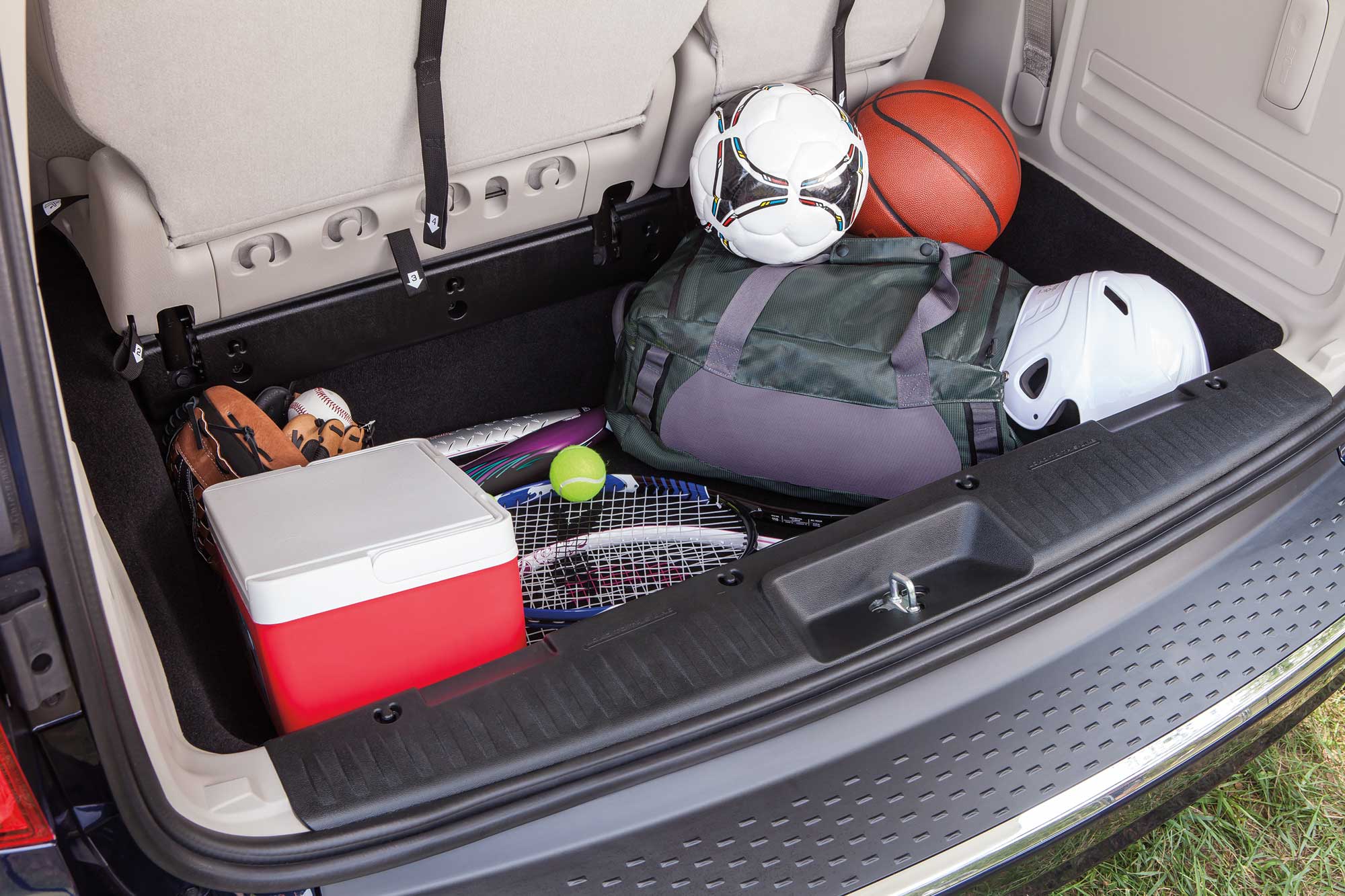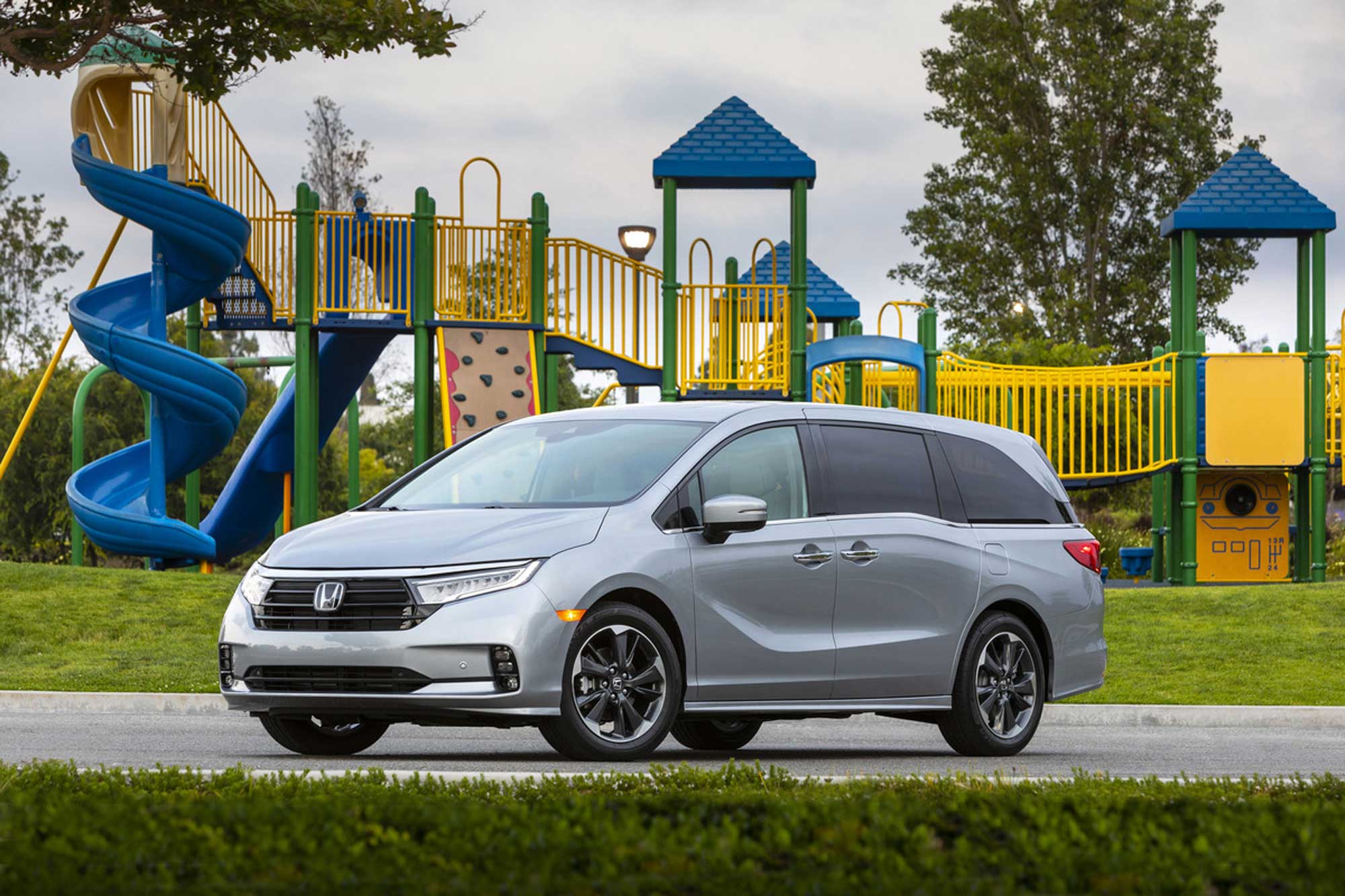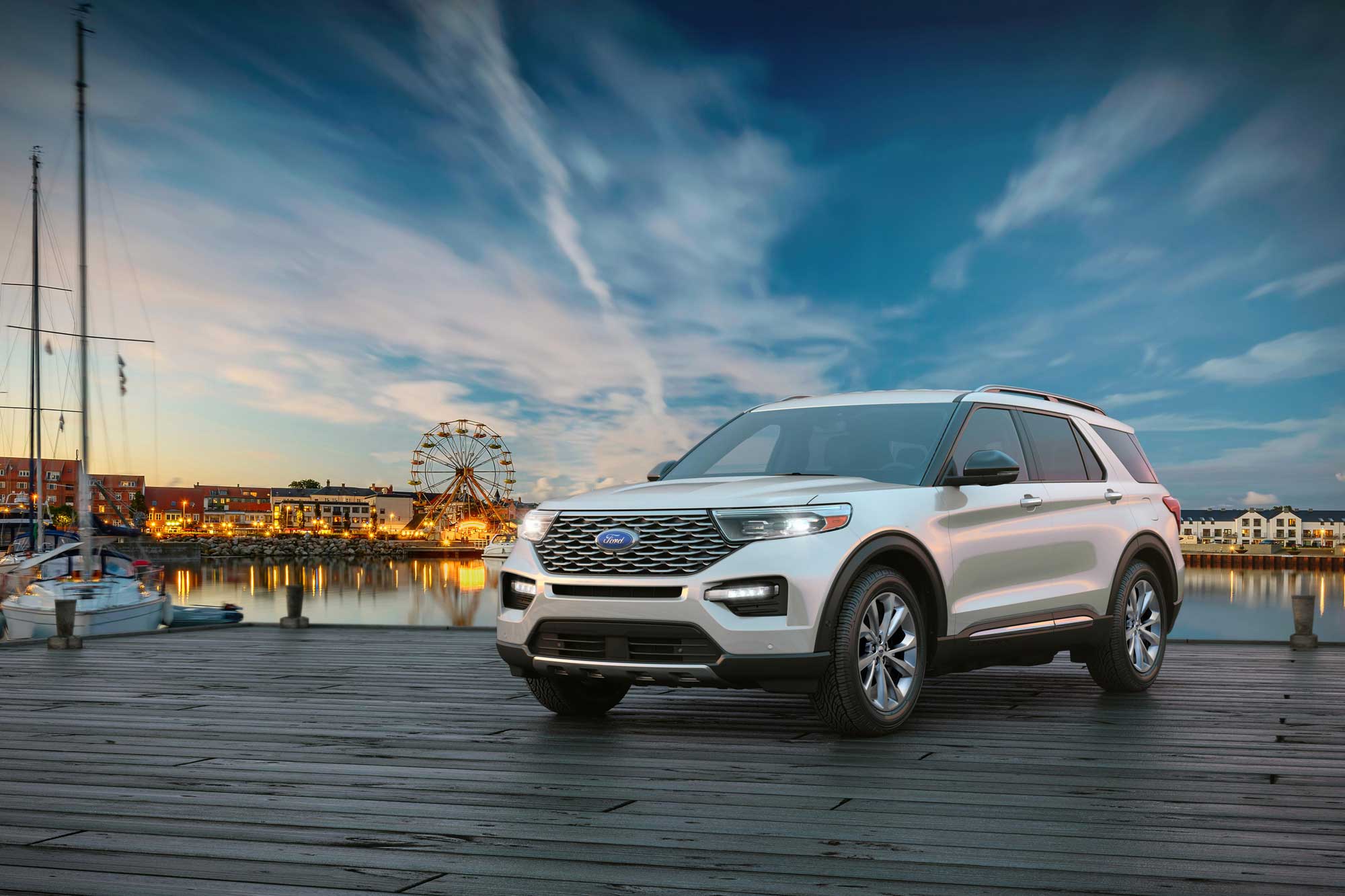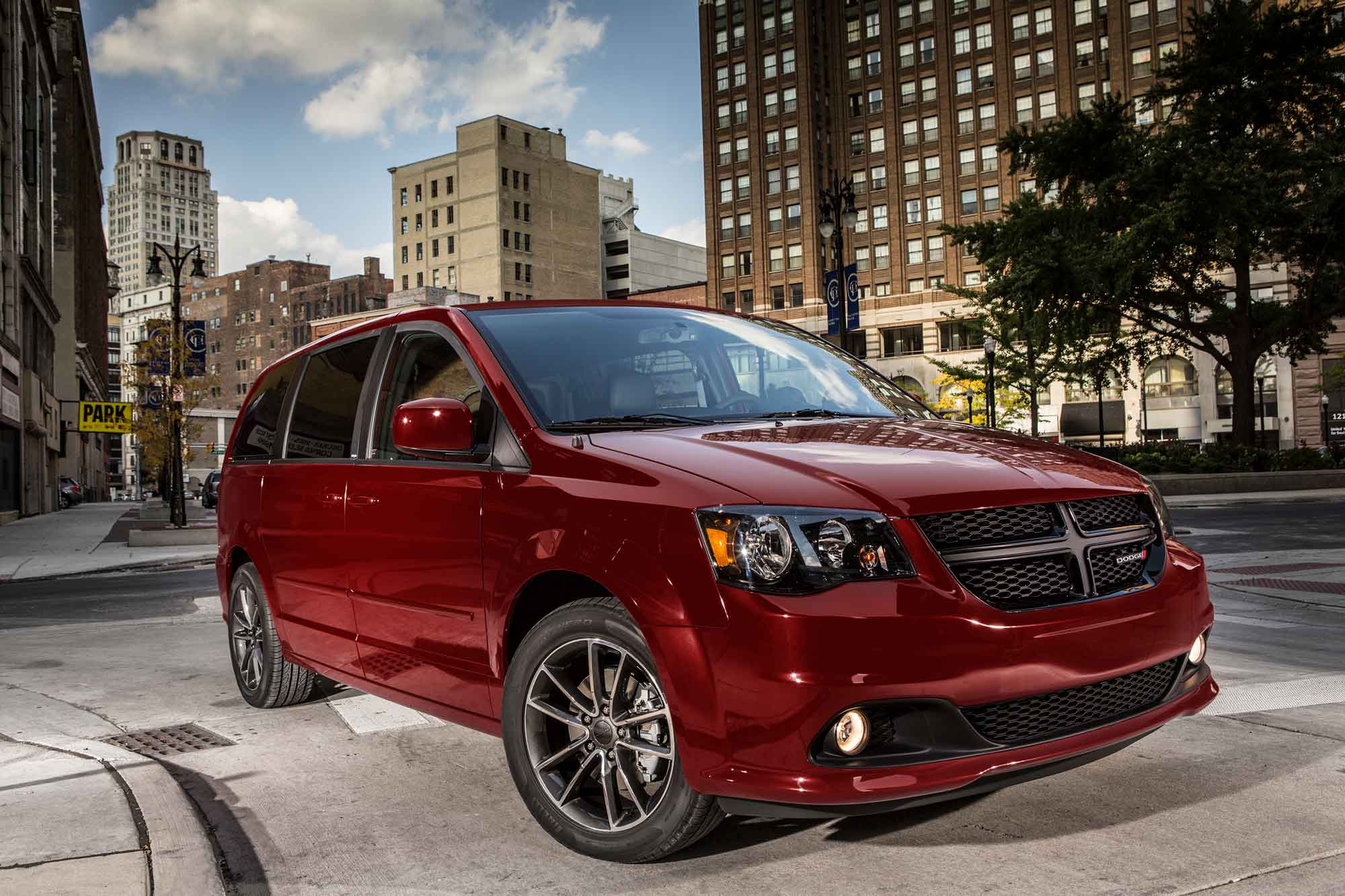Minivans vs. SUVs: How Minivans Are Finding Their Way Back Into Driveways
The once-favorite family hauler in the United States lost out to the SUV, but sales suggest there is still some room for the minivan's spacious versatility.
 Chrysler
Chrysler
The roads of the United States were a vastly different place four decades ago, a paleolithic world where gigantic wood-paneled station wagons were the primary family vehicle of choice.
But the 1983 debuts of the Dodge Caravan and Plymouth Voyager changed the game entirely. With the minivan, parents suddenly had a roomy, affordable option that could fit their family and slide more easily into a suburban garage, unlike those land-yacht-sized wagons.
The subsequent years saw minivans explode in popularity — making up almost 7% of U.S. automobile sales in 2000, with more than 1.3 million sold that year. In time, the Chrysler (now Stellantis) brand sold more than 15 million variants of its minivans worldwide.
Tastes changed, however, and the debut of three-row crossover SUVs that blended SUV looks with a modicum of minivan flexibility began to compete with the minivan's market share.
Despite their decline, minivans are still relatively strong sellers. For instance, a mid-pandemic spike in sales of the Toyota Sienna — celebrating its 27th anniversary this year — suggests there may still be room for the vehicle category so many of us remember from our childhoods.
 Dodge
Dodge
Minivans Offer Utility and Space for the Modern Family
AutoPacific analyst Ed Kim said the minivan's popularity was a case of the right product at the right time.
"Minivans simply offered a mixture of manageable external size and massive interior space and an incredibly compelling blend of function, ease of use, and utility," he said. "This was a huge revelation, especially compared to the gigantic and fuel-guzzling station wagons of the time or the bulkiness of traditional full-size vans."
Coming off the massive success of the K-Car — a small, front-wheel-drive sedan based on a unibody design — longtime industry figure Lee Iacocca and the Chrysler Corporation essentially invented a novel automobile category with their new small vans. The 1984 Dodge Caravan and Plymouth Voyager, using a stretched version of the K-Car platform, offered a uniquely family-friendly alternative.
"Because of their boxy shape, the high roof and the front-wheel drive, plus less drivetrain obstacles to deal with, there was a tremendous amount of room inside," Kim said. "A sliding door on the side also meant easy access."
 Honda
Honda
Affordable and Popular Models Attract Competition
Priced modestly at the time, the Caravan found almost 209,000 buyers in its first year of sales, and by the 1990s, Chrysler was selling more than 600,000 minivans per year. In 1992, the company even began production of minivans in Austria for the European market.
Competitors immediately popped up, with the Chevrolet Astro and GMC Safari first to market in 1985 and the Ford Aerostar appearing in 1986. These were followed later by models including the Chevy Lumina APV and Ford Windstar.
The Chrysler minivans also matured, as did their audience, with the 1990 debut of the Chrysler Town and Country, an upscale version of the basic Caravan/Voyager with available gathered leather seats and wood grain-style trim. Innovation continued with the 1996 Caravan/Voyager/Town and Country's driver-side sliding door — the first minivan to offer sliding doors on both sides of the vehicle — and 2004's debut of disappearing Stow 'n Go seating, adding ease and simplicity to the minivan lifestyle.
Meanwhile, the small-van segment was busy with a range of imports, such as the Honda Odyssey, whose 1995 model was the first to feature fold-flat third-row seating. Other imported rivals included the Mazda MPV, the Nissan Quest, and the Toyota Previa, which was replaced by the domestically assembled Toyota Sienna in 1998. Even Kia entered the minivan market with the Sedona in 2002.
The minivan became a standard fixture of life in the U.S. From the 1990s to the mid-2000s, you could buy vans from Buick, Chevrolet, Chrysler, Dodge, Eagle, Ford, Honda, Isuzu, Kia, Mazda, Mercury, Mitsubishi, Nissan, Oldsmobile, Plymouth, Pontiac, Saturn, Toyota, and Volkswagen.
 Ford
Ford
The SUV Gains Traction
Ultimately, though, the growing popularity of the SUV — and a cultural backlash against the vans that had ferried a generation of kids to soccer games and school proms — led to the minivan's downfall.
Tides began to turn, Kim said, as the once-small crossover SUVs evolved to offer larger third-row seating, plus a tougher image than those still largely slab-sided minivans found on every corner. The fifth-generation 2011 Ford Explorer, a unibody, three-row SUV, offered a coolness factor (and space capacity) that continued to push minivans out of the spotlight after the mid-2000s.
"Driving a minivan became sort of a reverse scarlet letter," Kim said. "A minivan said, 'I am so happily married,' which was sort of a stigma. But they had also really been the only choice at one time for anyone with a large family."
Kim credits SUVs such as the 2005 Nissan Pathfinder and its third row or General Motors' interrelated 2007 family of large crossover SUVs — the Saturn Outlook, GMC Acadia, Chevrolet Traverse, and Buick Enclave — as serious blows against the minivan's ubiquity, with passenger and cargo space that came close to minivan standards.
"These crossovers were also high-image vehicles, and for the first time, the customer had an option," Kim said. "People were willing to sacrifice some size and functionality simply so they could not drive a minivan."
 Dodge
Dodge
Minivans Aren't Out of the Game Yet
While Dodge produced the final Grand Caravan for the 2020 model year, carmakers continue to offer modernized minivan variants with some success. The more car-like 2017 Chrysler Pacifica, for instance, offered a new interpretation of the minivan form, with optional all-wheel drive and even a hybrid model to add versatility.
Other newer models, such as the futuristic Kia Carnival and contemporary versions of the Honda Odyssey, offer space and functionality typically only found in full-size SUVs such as the Chevy Suburban or Nissan Armada. Minivans continue to provide practical alternatives to offerings from the SUV world.
The most popular minivans in 2023 accounted for nearly 236,000 units sold — not a huge number, but still enough to indicate that the segment may not be completely dead. According to Kelley Blue Book consumer research in 2022, 5% of buyers still considered a minivan a valid choice to meet their motoring needs.
"I recently drove a Sienna, which comes standard as a hybrid model, and I was gobsmacked by the 33 mpg I got, even with every seat full," Kim said. "Innovation is what's going to stop the bleeding of minivan market share, and the products today are really pretty good."
With news of an upcoming fully electric version of the Pacifica, Kim said he believes there is still room for the minivan in U.S. garages, especially as drivers look for more fuel-efficient and less physically gigantic ways to haul around their families.
Written by humans.
Edited by humans.
 Andy Stonehouse
Andy StonehouseAndy Stonehouse literally fell into the world of auto writing while working as a ski-town journalist, and has not looked back since. A childhood spent dealing with the eccentricities of a 1976 MG Midget has made any subsequent auto experience a more safe and reliable drive. He has been blessed with nearby mountain trails and snowy roads in Colorado to do TV-adventure-styled test drives on a weekly basis.
Related articles
View more related articles